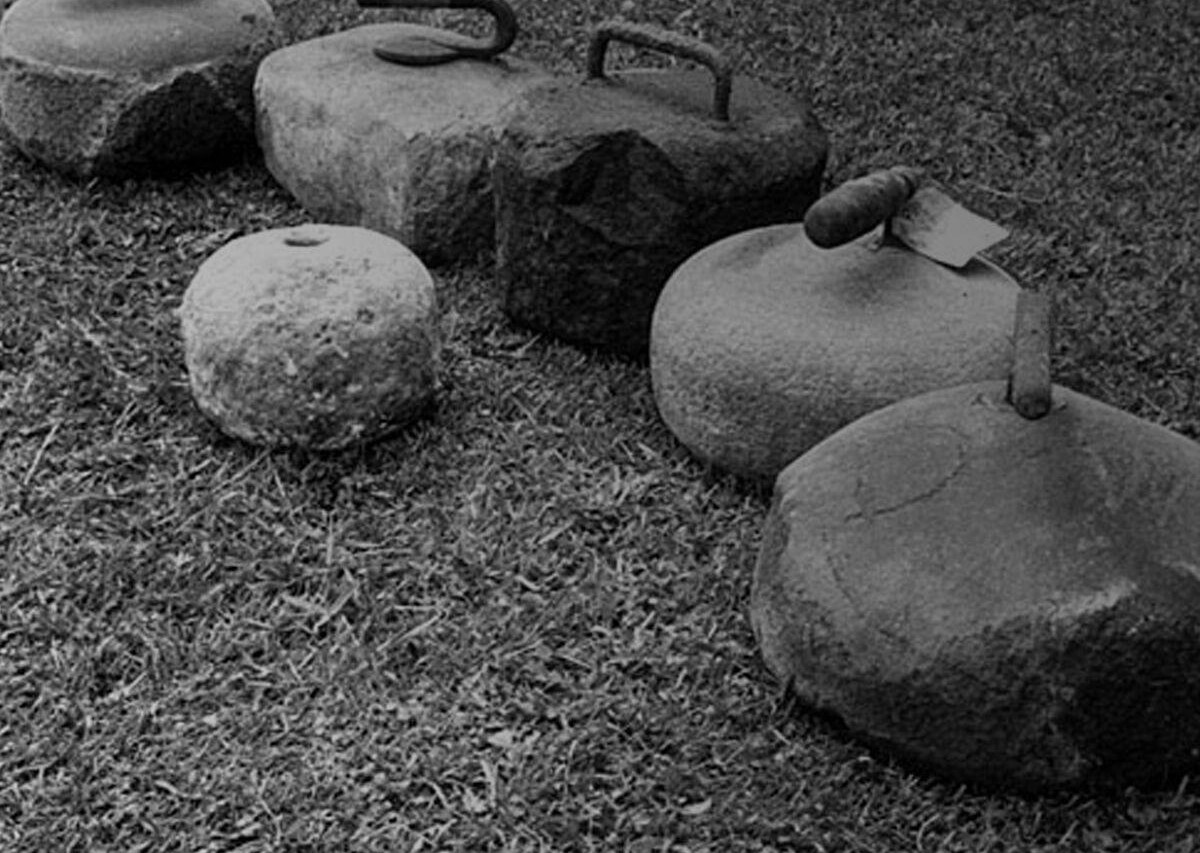THE MYSTERIOUS HISTORY OF THE MESMERISING SPORT OF CURLING
There’s something about a boy, a pebble and a body of water that makes him need to see how many times he can get it to skip across the water before it disappears into the murky depths. The world record is 51 skips, in case, like us, you were wondering. So, the next question is, who was first to weigh a smooth stone in his hand and send it skidding across the icy surface of a frozen pond? That answer is somewhat of a ‘whodunnit‘ mystery.
CURLING’S PAST LOST IN TIME
Drowning in controversy, conclusive proof of the origins of curling is indeed lost in time. It is commonly attributed to the Scots, who, if they didn’t, in fact, invent the game, most certainly developed and perfected it. The records show that by the 18th century, curling was a common national past-time in Scotland. The poetry and prose of that era speak of curling as a sport as well as the existence of curling societies. As to the tenets of the controversy, we’ll let you consider your verdict as we dig back.
CURLING’S FIRST HAND-WRITTEN RECORD MADE IN SCOTLAND
A certain John McQuhin, yes, of Scotland, made note of a challenge to a game on ice between one John Sclater – a monk at Paisley Abbey, and his associate, Gavin Hamilton in February 1540. However, they didn’t call it curling and no one can prove exactly what sort of ‘ice-game’ it was, so it is a somewhat feeble argument for Scottish to have invented curling.
However, some substantiation for Scotland’s contention did turn up much later, when an old pond in the country’s village of Dunblane was drained and a curling stone, the famous “Stirling Stone” with the year 1511 inscribed on it, was found with another curling stone bearing the date 1551. Who can blame the Scots for claiming the earliest curling record?
CURLING’S FIRST REFERENCE IN PRINT
Somewhat akin to a eulogy, a 17th-century elegy, which is an ode or dirge, was published by a Henry Adamson on the passing of his good friend M. James Gall. The elegy described him as a “citizen of Perth, and a gentle-man of goodly stature, and pregnant wit, much given to pastime, as golf, archerie, curling and jovial companie”. For a game such as curling to be mentioned as far afield as Perth argues to its development and popularity but gives no absolutes on origins.
CURLING? NAUGHTY, NAUGHTY
There is a tiny mention in records from a Presbyterian group in Glasgow concerning a certain Graham of Orkney; a Bishop no less. In 1638, he was apparently chastised for a terrible act. It was discovered that he had been a curler on the ice on the Sabbath. It appears the addictiveness of curling had become a temptation for ‘men of the cloth’ too.

AN ACCOUNT OF THE GAME OF CURLING
This was the title of a book by a Reverend John Ramsay of Gladsmuir, published in Edinburgh in 1811. He threw the cat among the pigeons putting a case forward for continental origins basing his conclusions on the origin of words used in the sport. He asserted they were derived from the German or Dutch languages.
COUNTERING THE CASE OF CURLING’S MURKY PAST
In his book, “A History of Curling”, published in 1890, well-known historian, also a Reverend, John Kerr postulates that many curling terms were in fact, of Teutonic or Celtic origin. Some had inferred origins from the low-land countries northwest of France and Germany, namely Belgium, the Netherlands and Luxembourg. Others favoured its origin from the Flemish sportsmen who emigrated to Scotland during the reign of James VI, who succeeded the English throne as James I of England. Kerr references this by saying, “If the Flemings had brought the game to Scotland in the 1500s, why did Scottish poets and historians make no special mention of its introduction before 1600?” He was unable to imagine no mention of this mesmerizing game for 100 years.
THE VERDICT FOR CURLING’S ORIGINS
Well, there isn’t one really, is there? Which is why most are more than happy to let the Scots take the credit, given that they were the ones who made the rules everyone still abides by today. Besides, what if it were an Eskimo who first slid a pebble across the ice and loved the roaring sound it made across the uneven patches? What if those two 1565 oil paintings, “Winter Landscape” with Skaters and a Birdtrap” and “Hunters in the Snow” which depict the Bavarian game “Ice-shooting” by Dutch master Peiter Bruegel describe curling? Or, what about the R.de Baudos (1575 – 1644) engravings that depict players sliding discs of wood along a frozen waterway, or the Dutch game from around the same period, called ‘kuting’, which was played with frozen lumps of earth? And so, the debate continues.
We leave the verdict to you, but we also invite you to test out this mesmerising game that found its way into the Olympics as a favourite to this day.
Whether you need to Hire Curling Lanes for a Corporate Event, or for your next Theme Party or whether you wish to Purchase a home Rink – because, after all, Sporting Careers start at home – contact us today!